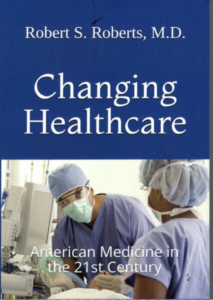
For many years I took a baby aspirin every day to prevent heart attacks or a stroke. It was the recommendation for anyone over the age of fifty. But recently that has all changed.
Are you aware of this change? Jack Phillips, writing in The Epoch Times, tells us a new survey found that about half of U.S. adults are not aware that the decades-old consensus about taking one low-dose aspirin per day has changed.
For years, health officials and medical groups recommended that older Americans take one aspirin, a blood thinner, daily to stave off cardiovascular disease or stroke. Then, in 2019, the American Heart Association and the American College of Cardiology announced new guidelines about low-dose aspirin usage, reversing the prior guidelines and noting that taking one aspirin per day can lead to increased risks of gastrointestinal bleeding.
But the message seems to have been missed by about half of Americans. A survey released on Feb. 3 by the University of Pennsylvania’s Annenberg Public Policy Center found that 48 percent of U.S. adults believe that for most people, the benefits of taking one low-dose aspirin each day to reduce the chance of stroke or heart attack outweigh the risks. More than 1,700 people participated in the survey.
Thirty-nine percent of those surveyed said they were not sure, while 13 percent said that the “risks are now thought to prevail over the benefits” under the new guidelines. “Habits backed by conventional wisdom and the past advice of health care providers are hard to break,” Kathleen Hall Jamieson, director of the Annenberg Public Policy Center, who oversaw the survey, said in a statement on Feb 4. “Knowing whether taking a low-dose aspirin daily is advisable or not for you is vital health information.”
The survey also shed more light on why people may believe that low-dose aspirin’s benefits outweigh the risks. About 45 percent of respondents said that they or someone in their family had suffered a heart attack or stroke, compared with 49 percent who did not have a family history of heart attack or stroke.
People who have a personal history of heart attack or stroke have been told to take a low-dose daily aspirin, typically about 81 milligrams. The survey found that about 18 percent of people with no history of either health problem reported taking aspirin daily.
In 2019, the American College of Cardiology and the American Heart Association changed their guidelines on daily aspirin usage, stating that it should be taken only infrequently because older adults could be at an increased risk of developing internal bleeding. However, daily aspirin is still recommended for people who have a high risk of a heart attack or stroke.
An independent panel of health officials known as the U.S. Preventive Services Task Force made a similar recommendation in 2022, after it had suggested daily aspirin usage to combat heart attack or stroke. Health officials have said that aspirin irritates the lining of the stomach, triggering internal bleeding, ulcers, and gastrointestinal problems. Because it’s a blood thinner, aspirin also can be dangerous for people who are at a high risk of bleeding, according to officials.
Older adults without heart disease shouldn’t take daily low-dose aspirin to prevent a first heart attack or stroke, the preventive services group said at the time. Bleeding risks for adults in their 60s and older who haven’t had a heart attack or stroke outweigh any potential benefits from aspirin, it said.
A study published on June 25, 2024, in the Annals of Internal Medicine found that 18.5 million adults ages 60 and older with no history of cardiovascular disease reported taking preventive aspirin in 2021, the latest year for which data are available. Of that figure, 3.3 million reported taking daily aspirin without being directed to by a doctor or medical professional.
This is a perfect example of why we should never say, “The science is settled.” Science is never settled because our knowledge is always growing. We must always challenge our conventional wisdom because you never know when further knowledge will change our understanding and alter the best advice based on “our current scientific recommendations.”



